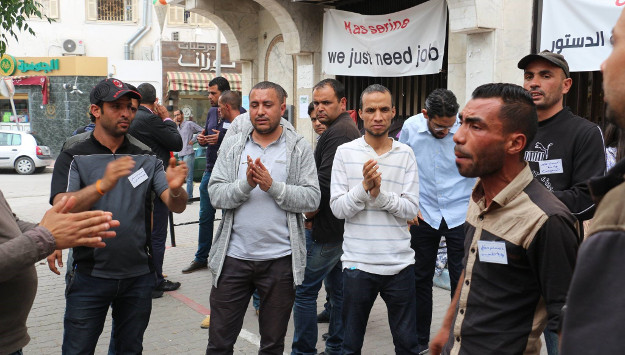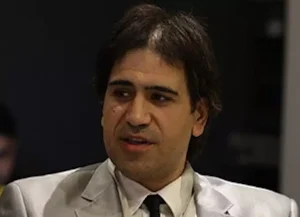Strategic Autonomy for Arab Nations: A Vision

In these fast-changing times of old realities giving way to new idiosyncrasies, it has become ever more challenging to predict what the future holds for the Middle East and North Africa. Like in previous years, the Arab world remains beleaguered by significant internal and external headwinds that are increasingly intertwined with how each country’s political economy is impacted by broader trends within the region and globally.
Our planet is now home to more than 8 billion people and the Arab region accounts for roughly 10 percent of the world’s inhabitants — a youthful population, with more than half being under 30 years of age. Yet, the vast expanse of land stretching from Pakistan in the east to Morocco in the west, Turkiye in the north and the Horn of Africa to the south, with its incredible opportunities and potential, remains overwhelmed by diverse pressures, from climate change to skyrocketing prices, regional tensions, conflict and worsening illiberalism.
Most narratives and analyses, however, tend to focus more on exclusive governments and regimes that do not represent the plurality of views across the region’s heterogeneous populations, which are a key component in any credible auguries of what lies ahead. Furthermore, it is no longer advisable to assess trends in isolation, owing to the rapidly shifting geopolitical landscapes that are contributing to a convergence or hybridization of the region’s systemic risks. This not only weakens policy action, but it also makes it difficult to credibly map out a realistic trajectory as the world hurtles deeper into the unknown.
Before any bold declarations of what next year will look like, it is important to note what has not changed in previous years that still has profound impacts on the future. Heightened uncertainty in recent years has only exacerbated the human security challenges that were identified two decades ago and popularized in the tumult of the so-called Arab Spring. A lot of these struggles from yesteryear are still prevalent today, converging with stresses from the pandemic and the global economic turmoil it fueled to create newer, more potent hybrid threats.
There is some hope, however, with regards to the region’s macroeconomic outlook. According to the World Bank, the MENA region’s economy will grow by 3.5 percent next year — albeit unevenly — as the global economy transitions from a phase of low inflation and low interest rates to a challenging equilibrium of high inflation and high interest rates. Growth is expected to slow next year, as high oil and gas prices dampen demand, coupled with China’s slowing economic activity due to its “zero-COVID” policies.
For the Gulf Cooperation Council and other oil exporters in the region, elevated fossil fuel prices are generating record windfalls, boosting fiscal revenues at a time when most are seeking to embark on costly transitions away from rentier states toward diversified, sustainable post-oil economies.
Although we are still decades away from a fossil fuel-free global economy, delegates from around the world will again convene in the UAE for the 28th UN climate change conference in November 2023, building on the progress made at this year’s meeting in Egypt. It can be hoped that the main achievement in Sharm El-Sheikh — a breakthrough on the contentious issue of wealthy, industrialized countries compensating developing countries for losses and damage attributable to worsening climate change — will gain momentum in Abu Dhabi.
However, as promising as such a breakthrough is, the Arab region’s hosting of successive global climate summits is unlikely to relieve its pervasive water insecurity issues, let alone overcome its potency as a force multiplier for other risks. The MENA region will never be able to make any significant headway on climate action if it does not address its perennial water security problems.

Complications from severe water shortages are just one more headache for the region’s oil-importing developing countries, which do not share the enthusiasm and optimism of their oil-endowed neighbors as we head into a new year. For them, what lies ahead is a bleak future, heightened risks and uncertainty, as import costs soar along with food and energy prices, while currencies depreciate and the cost of debt becomes increasingly unsustainable.
Any gains in reducing poverty, enhancing literacy or improving healthcare outcomes are quickly overshadowed by the fact that most developing Arab economies will have difficulty ensuring that those benefits accrue equitably to all. As a result, a combination of mass youth unemployment, deficits in economic opportunities for and the participation of women, expensive safety nets and anemic private sectors — squeezed by burdensome regulations, an uneven playing field and limited access to financing — will stifle future growth, hinder employment opportunities and reduce incomes.
At the domestic level, new and old threats are forcing governments in the region to respond to crises in increasingly novel ways to build resilience and stave off future shocks. Most countries are still nowhere near their desired “learning states” of constantly measuring, experimenting with and adjusting policies toward what should be sustainable, inclusive development.
Instead, the disturbing lack of political will and institutional capacities for reform, coupled with poor governance, will keep stunting policy action, making top-down interventions ineffectual, further eroding public trust and, ultimately, fueling objections to the legitimacy of governing entities. Thus, the ongoing struggle to rewrite the region’s social contracts following the shocks from over a decade ago will continue to spawn human-made crises.
Beyond borders, intensifying competition among more assertive nonstate, quasi-state and state actors will keep reshaping and reshuffling the regional landscape. Libya, Yemen, Syria and Iraq remain the foremost battlegrounds for rival actors vying to define the region in terms that best serve their interests. There is no shared desire to see these troubled countries create unpredictable security and political risks for themselves or others. Instead, most actors have resolved to maintain self-serving niches that only prolong the malaise and conflict, creating situations where developments in contested extraterritorial spaces spill over into other arenas and halt cooperation on collective threats, such as climate change, migrant surges, terrorism and transnational crime.
Turkiye’s rivalry with Egypt in the Eastern Mediterranean and in Libya is unlikely to be resolved soon, although their overall relations will not collapse completely owing to the significant bilateral trade between the two countries. Algeria and Morocco, on the other hand, will likely see further escalations in their uncompromising approaches to maximizing their influence in North Africa — one of the least-integrated regions of the world — as well as across the Sahel and other parts of Africa.
Coupled with Tehran’s undue and malign influence across the “Shiite Crescent,” the Arab world may have difficulty mounting effective responses to collective challenges amid a rising tide of insecurity and instability. Divergence, disunity and competing approaches to the region’s woes will only create fresh opportunities for enterprising regional and international actors to flex their diplomatic, military and economic heft in pursuit of national self-interests, soft power and “a place in the sun” on an increasingly crowded world stage.
Lastly, the Arab world remains resistant to the prevailing trends in global geopolitics that insist on viewing the region’s engagements with the US, China and, to a lesser extent, Russia through the lens of great power competition. In fact, most of the region is and will continue to align itself away from such a simplistic, patronizing dynamic by using the intensifying competition to pursue its own interests.
The region will continue seeking strategic autonomy, whether through deescalation with former adversaries, normalization, and/or maintaining engagements with the world’s foremost powers on purely transactional terms. Thus, in the coming years, Arab capitals will, for instance, continue to embrace Beijing’s forays into their economies and welcome Russian armaments as alternatives to the West’s exports, which often come with too many expectations for the region to accede to external designs that can be harmful and even counterproductive.
Hafed Al-Ghwell is a senior fellow and executive director of the Ibn Khaldun Strategic Initiative at the Foreign Policy Institute of the Johns Hopkins University School of Advanced International Studies in Washington, D.C., and a former adviser to the dean of the board of executive directors of the World Bank Group. Twitter: @HafedAlGhwell
This article was originally published in ArabNews
Want to chase the pulse of North Africa?
Subscribe to receive our FREE weekly PDF magazine















